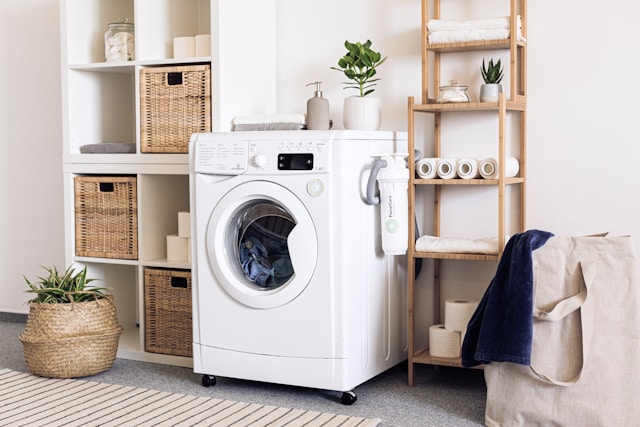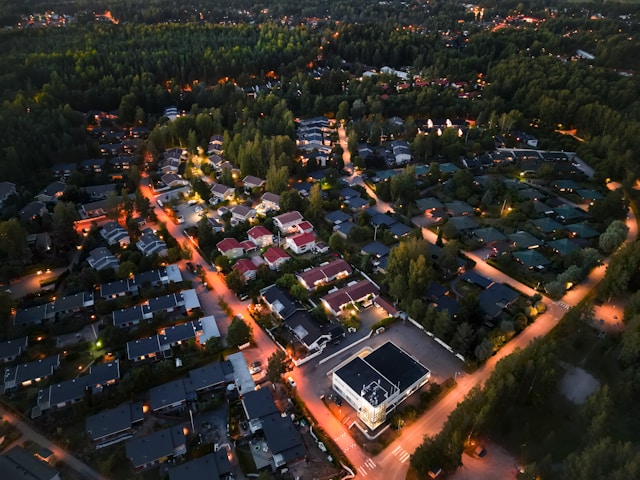Tips For Creating A Calmer Home Environment
Disruptive noises can disrupt any environment and disturb your sense of calm. Noise pollution refers to any unwanted sound that has a negative impact on the physical and emotional well-being of living beings, leading to stress, sleep disturbances, and hearing problems.
In urban areas, noise pollution can stem from high traffic, construction activities, or the general hustle and bustle associated with densely populated areas. Even the hum of everyday electronic devices can make it challenging to create a peaceful atmosphere, regardless of where you reside. While the effects of noise pollution on humans can be frustrating, they are manageable. Transform your home into a tranquil sanctuary by implementing these ten tips to create a more serene environment.
1. Rearrange Your Home's Layout
Consider altering your home's layout as a cost-effective solution to combat the effects of noise pollution. The placement of furniture can significantly impact the amount of noise that enters your living space. Position large items like bookshelves against walls to absorb sound vibrations.
Designate rooms intended for focused work or relaxation away from noisy areas such as the kitchen or living room. Additionally, incorporating thicker rugs, curtains, pillows, and furniture can help enhance the overall tranquility of your home. Soft, dense fabrics are particularly effective at absorbing sound.
2. Power Down Electronic Devices
Common electronic appliances like televisions, gaming consoles, and computers can contribute to the overall noise pollution within your home. Turning off these devices, even though their sounds may seem routine, can significantly improve the quietness of your surroundings.
3. Minimize Noise from Appliances
When running noisy appliances like the dishwasher or washing machine, try closing the door to create a barrier between yourself and the source of noise. This simple solution can help restore a sense of peace and quiet.

4. Collaborate with Your Community to Address Outdoor Noise
If outdoor noises are disrupting your home environment, they may also be affecting your neighbors. Excessive exposure to loud sounds during adolescence can impact a child's mental well-being, making it a community concern in family-oriented neighborhoods. Work together to find solutions for noise pollution from construction activities or traffic by engaging with local authorities.
If noisy neighbors are disturbing your peace, consider having a constructive conversation to reach a mutual agreement. Simple adjustments like changing the time of day for noisy activities can make a significant difference.
5. Utilize Noise-Canceling Technology
From white noise machines to ambient sound apps, technology offers various solutions to create a peaceful home environment. Noise-canceling headphones or quality earplugs are portable options that can help you find tranquility wherever you go.
6. Integrate Smart Home Systems
Enhance noise-canceling technology by incorporating smart home systems. Automated windows that close in response to specific noise levels or soundproof blinds that can be controlled with a remote can further reduce noise pollution in your home.

7. Create Natural Sound Barriers
Integrating natural elements like trees and hedges around your home can enhance its aesthetic appeal while reducing noise pollution. Vegetation naturally blocks sound and benefits the environment. Consider adding water features such as fountains or waterfalls to replace disruptive noises with soothing sounds.
8. Upgrade Your Doors and Windows
Doors and windows are common entry points for outside noise. Upgrading to soundproof doors and windows or improving existing ones with double or triple glazing can help insulate your home from unwanted sounds. Weatherstripping and door sweeps are effective ways to seal gaps and reduce noise infiltration while also enhancing your home's energy efficiency.
9. Enhance Wall and Roof Insulation
Just like doors and windows, walls and roofs can allow noise to seep into your home. Adding additional insulation using materials like acoustic foam or mineral wool can help absorb sound vibrations. If you live near high-traffic areas, extra roof insulation may also benefit your cardiovascular health by reducing exposure to transportation noise.
10. Create a Quiet Retreat
Designate a specific room or corner of your home for quiet activities such as reading or meditation. Implementing the aforementioned tips, such as incorporating cozy furniture and minimizing electronic distractions, can transform this space into a peaceful sanctuary. Make time in your daily routine to unwind and rejuvenate in your quiet retreat.

Embrace Peace and Quiet
Take control of your environment by reducing noise pollution. Whether through home improvement projects like upgrading doors, windows, or insulation, or by adopting simple practices like turning off electronics and creating dedicated quiet spaces, these tips will guide you towards a more peaceful and relaxing living space.
